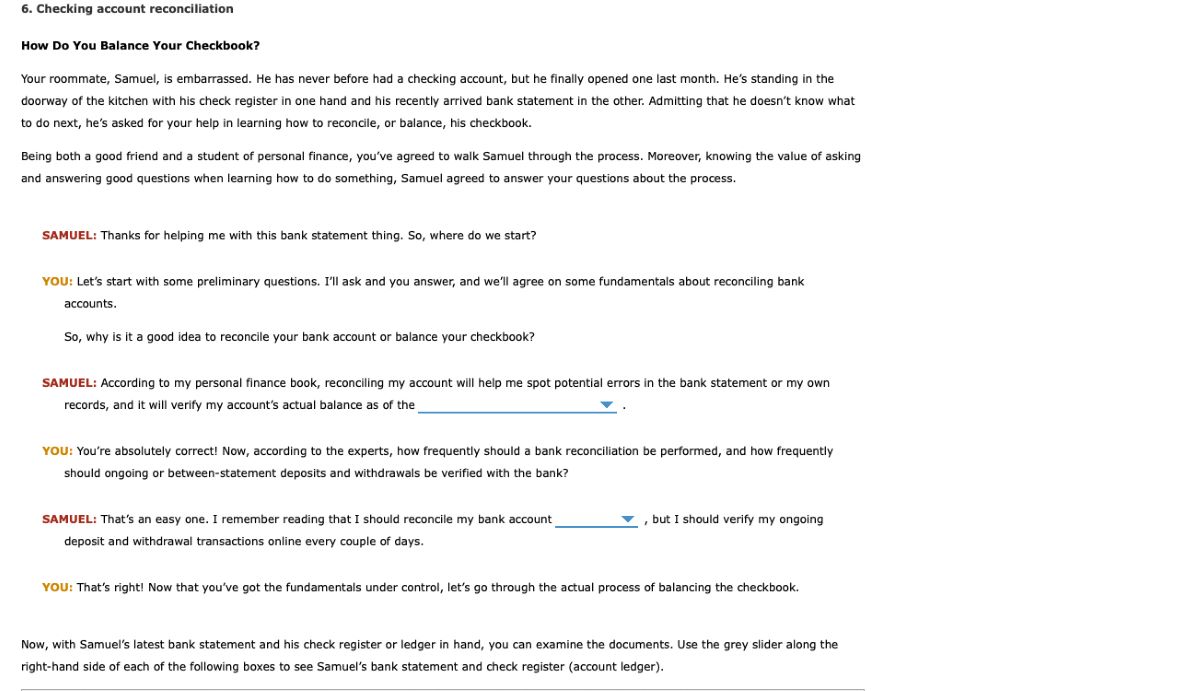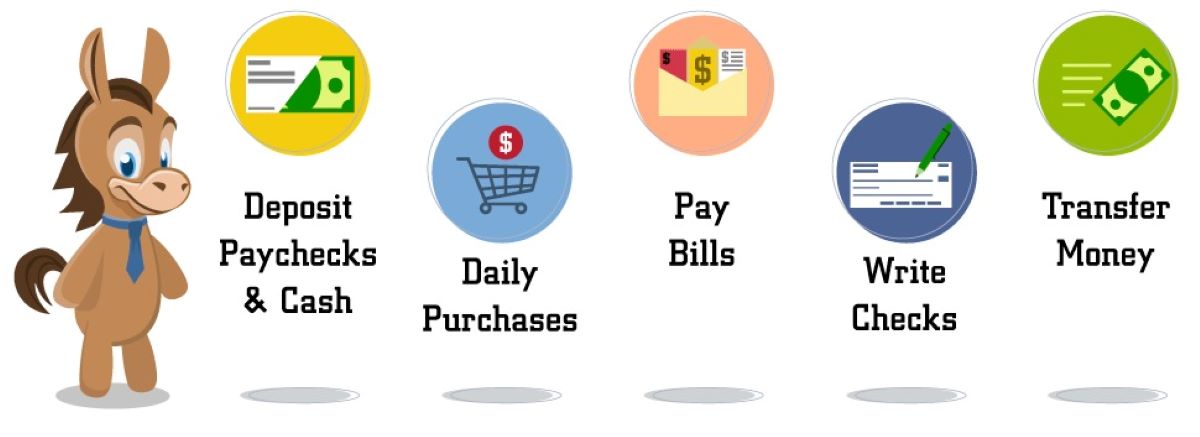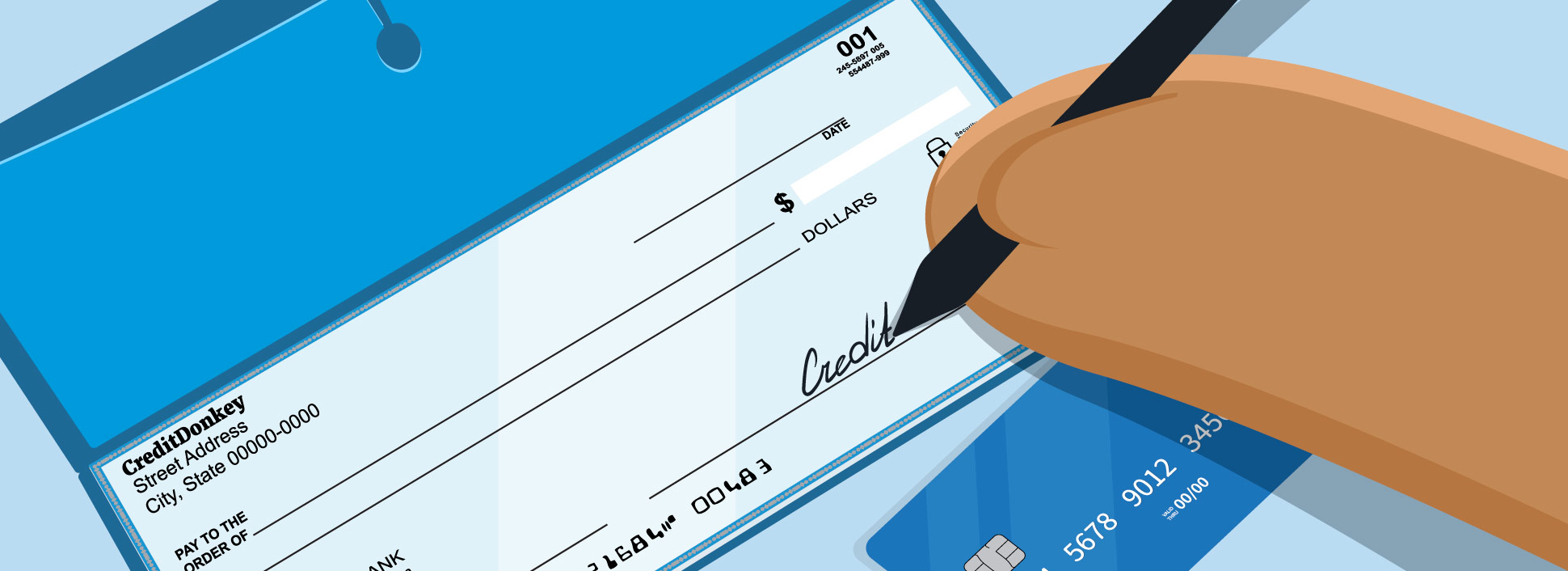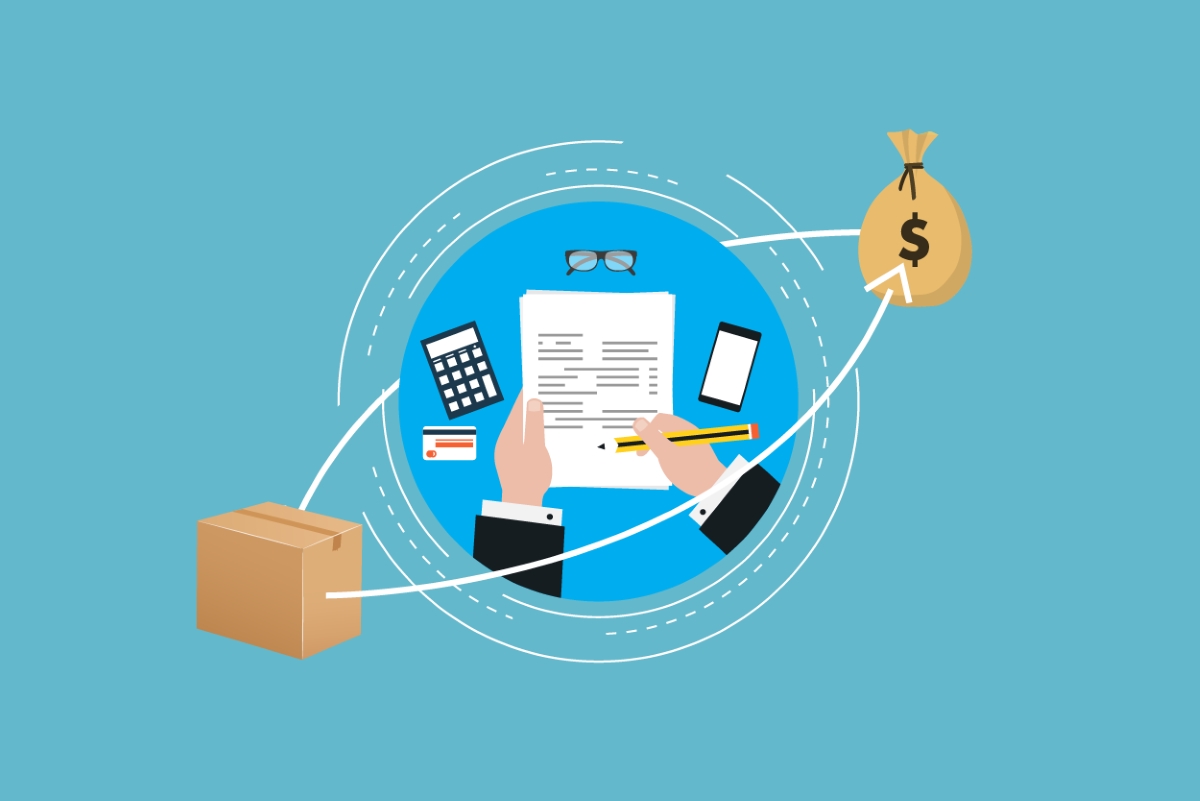Home>Finance>What Should You Do First When Opening A Savings Account?


Finance
What Should You Do First When Opening A Savings Account?
Modified: December 30, 2023
Looking to open a savings account? Discover the first steps to take when starting your financial journey. Explore tips and tricks for managing your finances with confidence.
(Many of the links in this article redirect to a specific reviewed product. Your purchase of these products through affiliate links helps to generate commission for LiveWell, at no extra cost. Learn more)
Table of Contents
- Introduction
- Research Different Banks
- Compare Interest Rates
- Consider Fees and Minimum Balances
- Evaluate Online and Mobile Banking Options
- Review Customer Reviews and Ratings
- Visit the Bank and Ask Questions
- Gather Required Documents
- Fill Out the Application
- Make an Initial Deposit
- Set Up Automatic Savings Transfers
- Monitor your Account Regularly
- Conclusion
Introduction
Opening a savings account is a crucial step towards financial stability and security. Whether you’re saving for a specific goal, such as a new car or a down payment on a home, or simply building an emergency fund, a savings account can help you achieve your financial goals.
However, with so many banks and financial institutions offering savings accounts, it can be overwhelming to know where to start. This article will guide you through the process and help you make informed decisions when opening a savings account.
Before diving into the steps, it’s essential to understand the significance of choosing the right bank. The bank you select will determine the interest rates, fees, and services associated with your savings account. Therefore, it’s crucial to do your research and carefully consider your options.
In this article, we will discuss various factors to consider when opening a savings account. We’ll explore how to research different banks, compare interest rates, evaluate fees, and minimum balances, and even review customer reviews and ratings.
Additionally, we’ll touch upon the importance of online and mobile banking options, the significance of visiting the bank in person, and the necessary documents you’ll need to gather. Finally, we’ll outline the steps to fill out an application, make an initial deposit, and set up automatic savings transfers.
By following these guidelines, you’ll be well-prepared to open a savings account that aligns with your financial needs and goals. Let’s dive in and explore each step in detail.
Research Different Banks
When opening a savings account, it’s essential to research different banks and financial institutions to find the one that best suits your needs. Start by making a list of the banks in your area or explore online banks that offer competitive rates and convenient services.
Consider factors such as the bank’s reputation, years of experience, and customer satisfaction ratings. Look for banks that are well-established, financially stable, and have a good track record in customer service. You can easily find this information by visiting their websites or checking reputable review websites.
Furthermore, take into account the bank’s proximity to your home or workplace. Having a bank nearby can make it easier to access your savings and seek assistance when needed. Additionally, check if the bank has a robust online and mobile banking platform, which provides convenience and accessibility.
Another crucial aspect to consider is the range of services offered by the bank. Some banks may offer perks like free ATM access, rewards programs, or discounts on other financial products. Assess your banking needs and preferences to choose a bank that aligns with your requirements.
A thorough research process will help you make an informed decision and select a bank that offers the best features and benefits for your savings account. Take your time to compare the different options available and evaluate their pros and cons before making a final decision.
Remember, the objective of this step is to narrow down your choices and select a bank that you feel confident about entrusting your savings with. Once you have a list of potential banks, you can move on to the next steps of comparing interest rates, evaluating fees and minimum balances, and reviewing customer reviews.
Compare Interest Rates
One of the most critical factors to consider when opening a savings account is the interest rate offered by the bank. The interest rate determines how much your savings will grow over time, so it’s essential to compare rates among different banks.
Start by checking the current interest rates offered by each bank on your list. Most banks will have this information readily available on their websites or by contacting their customer service representatives. Pay attention to both the annual percentage yield (APY) and the annual interest rate (AIR) to get a complete picture of how much you can earn on your savings.
While it’s tempting to choose the bank offering the highest interest rate, it’s also crucial to consider other factors. Some banks offer high introductory rates that might decrease after a certain period. Ensure that you understand if the interest rate is subject to change and what factors may affect its fluctuation.
In addition to the interest rate, consider the frequency at which the bank compounds interest. Compounding refers to how often the interest is calculated and added to your savings account. Banks may compound interest daily, monthly, quarterly, or annually. The more frequent the compounding, the more your savings will grow over time.
It’s also worth checking if the bank offers tiered interest rates. Tiered interest rates mean that different savings account balances will earn different rates of interest. For example, higher balances may earn a higher interest rate. If you anticipate having a significant amount in your savings account, choosing a bank that offers tiered interest rates can be beneficial.
Remember that interest rates can fluctuate over time due to changes in the market or the bank’s policies. It’s crucial to review and monitor the interest rate offered by your chosen bank periodically to ensure that you’re still getting a competitive rate for your savings.
By carefully comparing interest rates among different banks, you can choose a savings account that allows your money to grow at the highest rate possible, helping you reach your financial goals faster.
Consider Fees and Minimum Balances
When opening a savings account, it’s important to consider the fees associated with the account and any minimum balance requirements set by the bank. These factors can significantly impact your overall savings and should be carefully evaluated.
Start by reviewing the fee schedule provided by each bank on your list. Common fees associated with savings accounts may include monthly maintenance fees, ATM withdrawal fees, overdraft fees, and fees for additional services such as wire transfers or paper statements. You’ll want to choose a bank that offers minimal or no fees, especially for services you anticipate using frequently.
In addition to fees, pay attention to any minimum balance requirements set by the bank. Some banks require account holders to maintain a minimum balance to avoid monthly maintenance fees or qualify for certain benefits. Evaluate whether you can comfortably meet these requirements and if they align with your financial situation and goals.
You should also consider the consequences of not meeting the minimum balance requirements. If you’re unable to maintain the minimum balance, the bank may charge additional fees or downgrade your account to a lower-tier savings account with lower interest rates. Make sure you understand the potential consequences and assess if they’re acceptable to you.
While it’s common to prioritize finding a bank with competitive interest rates, it’s crucial to strike a balance with fee structures and minimum balance requirements. A bank offering higher interest rates might have corresponding fees or higher minimum balances, which may not be suitable for everyone.
Comparing the fee structures and minimum balance requirements among different banks will help you find an account that not only offers favorable interest rates but also has reasonable fees that won’t eat into your savings.
Remember that fees and minimum balance requirements can vary across banks, so take your time to review and understand the terms and conditions associated with each savings account. This will help you make an informed decision and choose a bank that offers a balance of competitive interest rates and reasonable fees that fit your financial needs.
Evaluate Online and Mobile Banking Options
In today’s digital world, online and mobile banking options have become essential factors to consider when opening a savings account. These features provide convenience, accessibility, and flexibility in managing your financial transactions.
Start by exploring the online and mobile banking capabilities offered by each bank on your list. Check if they have a user-friendly website or mobile app that allows you to easily access your account, view balances, transfer funds, and perform other essential banking tasks.
Consider the specific features offered by the bank’s online and mobile banking platforms. Some key features to look for include:
- Secure login options, such as biometric authentication or two-factor authentication, to ensure the safety of your account
- Ability to set up alerts and notifications for account activity and balance updates
- Integration with personal finance management tools to track your spending and savings goals
- Easy and convenient options to deposit checks remotely using your smartphone camera
- Ability to schedule recurring transfers or set up automatic savings plans
- Access to online statements and transaction history
Additionally, assess the bank’s customer support and assistance options. Look for banks that offer reliable customer service through online chat, email, or a dedicated helpline. Having prompt and helpful customer support can make a significant difference when you encounter any issues or have questions regarding your savings account.
Evaluating the online and mobile banking options can ensure that you have the flexibility and convenience to manage your savings account efficiently and effectively. It allows you to access your funds and perform transactions anytime, anywhere, without the limitations of traditional brick-and-mortar banking.
As technology continues to advance, online and mobile banking services are becoming increasingly important. Take the time to assess and compare the online and mobile banking options offered by different banks to find a savings account that aligns with your digital banking preferences and needs.
Review Customer Reviews and Ratings
One valuable source of information when opening a savings account is customer reviews and ratings. Hearing about the experiences of other account holders can provide insight into the quality of service and overall satisfaction with the bank.
Start by searching for customer reviews and ratings of the banks you are considering. You can find these reviews on various platforms, including bank review websites, financial forums, and social media groups. Pay attention to both positive and negative reviews to gain a comprehensive understanding of the bank’s strengths and weaknesses.
Reading customer reviews can provide valuable insights into aspects such as customer service, responsiveness, and ease of doing business with the bank. Look for recurring themes or specific concerns mentioned by multiple customers to identify any potential red flags or areas of concern.
Keep in mind that individual experiences may vary, and not all reviews may accurately reflect the overall quality of the bank. However, analyzing customer reviews and ratings can help you get a general sense of the bank’s reputation and level of customer satisfaction.
You should also consider the bank’s ratings from reputable financial institutions and rating agencies. These ratings are often based on factors such as financial stability, customer complaints, and overall performance. A higher rating indicates a more reliable and trustworthy institution.
While customer reviews and ratings should be taken into account, it’s essential to balance them with other factors such as interest rates, fees, and services. Remember that everyone’s financial needs and preferences are different, so consider the relevance of reviews to your specific circumstances.
By reviewing customer reviews and ratings, you can gain valuable insights into the experiences of others and make informed decisions when selecting a bank for your savings account. Combine this information with your own research and priorities to choose a bank that meets your expectations and requirements.
Visit the Bank and Ask Questions
While online research and customer reviews provide a wealth of information, it’s also beneficial to visit the bank in person to get a firsthand look at their services and ask any questions you may have.
Schedule a visit to the bank branch where you plan to open your savings account. During your visit, observe the environment, cleanliness, and professionalism of the staff. These factors can give you an idea of the bank’s overall culture and commitment to customer service.
Take the opportunity to speak with a representative or personal banker. They can provide detailed information about the savings account options, features, and any current promotions or offers. Be sure to ask questions related to the specific aspects of the account that are important to you, such as interest rates, fees, minimum balance requirements, and any additional services or benefits.
Some questions you might consider asking include:
- What is the current interest rate on the savings account?
- Are there any fees associated with the account, and how can they be waived?
- What is the minimum balance requirement, and what happens if I don’t meet it?
- Are there any additional perks or benefits associated with the account?
- What is the process for setting up automatic savings transfers?
- What are the options for accessing the account online or through a mobile app?
Visiting the bank and asking questions allows you to clarify any doubts or concerns you may have and ensures that you have a clear understanding of the savings account terms and conditions. The bank representative can provide personalized guidance and recommendations based on your specific financial goals and needs.
Remember to take notes during your visit and ask for any brochures or information that may be helpful for your decision-making process. Having all the information in hand will enable you to carefully evaluate your options and make an informed choice when opening your savings account.
Gather Required Documents
Before opening a savings account, it’s important to gather the necessary documents that the bank will require. Having these documents ready will streamline the account-opening process and ensure a smooth transaction.
The specific documents needed may vary depending on the bank and the type of savings account you intend to open. However, there are some common documents that most banks typically require:
- Proof of Identity: You will likely need to provide a valid government-issued identification document, such as a driver’s license, passport, or national identification card. This document serves to verify your identity.
- Proof of Address: The bank may ask for a document that verifies your residential address, such as a utility bill, bank statement, or lease agreement. This helps establish your address and ensure that you are a resident in the bank’s service area.
- Social Security Number or Tax Identification Number: In some cases, the bank may require your Social Security Number (SSN) or Tax Identification Number (TIN) for tax reporting purposes. Be prepared to provide this information if requested.
- Employment Information: The bank may ask for details about your employment, including your employer’s name, address, and contact information. This information helps the bank assess your financial stability and verify your source of income.
- Financial Information: Depending on the bank’s policies, you may need to provide information about your current financial situation, such as your annual income, assets, and liabilities. This information assists the bank in determining your eligibility and the type of savings account that best suits your needs.
It’s essential to verify the specific document requirements with the bank before visiting the branch or applying online. This will save you time and avoid any potential delays or complications during the account-opening process.
Organize and gather these documents in advance, ensuring that they are up to date and easily accessible. Keep in mind that some banks may require physical copies of these documents, while others may accept electronic scans or digital uploads.
By having all the required documents ready, you’ll be well-prepared to open your savings account efficiently and accurately. It’s also a good opportunity to review your personal information and ensure its accuracy before providing it to the bank.
Fill Out the Application
Once you have chosen the bank and gathered the necessary documents, it’s time to fill out the application for your savings account. The application is a formal process that provides the bank with the information required to open your account.
Whether you are opening the account in person at the bank branch or applying online, the application will typically ask for the following information:
- Personal Information: You will need to provide your full name, date of birth, contact details, and Social Security Number or Tax Identification Number. This information is used to identify you and ensure compliance with regulatory requirements.
- Address Information: You will be asked to provide your current residential address, including your street address, city, state, and ZIP code. The bank needs this information to verify your identity and establish your contact information.
- Employment Information: The application may require details about your employment, such as your employer’s name, address, and contact information. This information helps the bank assess your financial stability and verify your source of income.
- Financial Information: You may be asked to provide information about your income, assets, and liabilities. This helps the bank understand your financial situation and determine the type of savings account that best suits your needs.
- Account Preferences: The application will ask you to specify the type of savings account you wish to open, such as a basic savings account or a high-yield savings account. You may also need to indicate whether you want additional features, such as online banking or automatic savings transfers.
It’s crucial to carefully review the application form and fill it out accurately. Ensure that all the information provided is up to date and matches the supporting documents you gathered earlier. Any discrepancies or errors may cause delays in the account-opening process.
If you have any questions or are uncertain about certain sections of the application, don’t hesitate to seek assistance from a bank representative. They can guide you through the process and provide clarification when needed.
Once you have completed the application, double-check all the information for accuracy. Sign and date the application, as required, and submit it to the bank. If you are applying online, follow the instructions provided to submit the application electronically.
By carefully and accurately filling out the application, you’ll ensure a smooth and efficient process for opening your savings account.
Make an Initial Deposit
After successfully completing the application process, the next step in opening a savings account is making an initial deposit. The initial deposit is the minimum amount required by the bank to activate your account and start earning interest on your savings.
Most banks have specific minimum deposit requirements that vary depending on the type of savings account you are opening. The minimum deposit can range from a small amount to a more substantial sum, depending on the bank’s policies.
Before making the initial deposit, carefully review the bank’s requirements and ensure that you have the necessary funds available. It’s important to note that the initial deposit is separate from any fees or charges associated with the account.
There are several options for making the initial deposit:
- Cash: If you are opening the account in person at a bank branch, you can make the initial deposit in cash. The bank representative will assist you in completing the transaction and ensure that the funds are credited to your account.
- Check or Money Order: You can also make the initial deposit by writing a check or obtaining a money order. Be sure to include your account number on the check or money order and deliver it to the bank either in person or by mail, depending on their instructions.
- Electronic Transfer: Many banks offer the option to transfer funds electronically from another bank account. This allows you to initiate the transfer online or through your bank’s mobile app. Provide the necessary information, such as your savings account number and the routing number of the bank, to complete the transfer.
Once the initial deposit is made, it may take a few business days for the funds to be credited to your account. The bank will provide you with confirmation or receipt of the deposit, which serves as proof that the account has been funded.
Remember that the initial deposit is an essential step in opening your savings account. It not only activates your account but also sets the foundation for your future savings goals. It’s always advisable to contribute more than the minimum deposit if you are financially able to do so, as it can help you maximize your savings potential.
By making the required initial deposit, you’ll officially establish your savings account and embark on your journey towards achieving your financial goals.
Set Up Automatic Savings Transfers
Setting up automatic savings transfers is a smart and convenient way to consistently contribute to your savings account. This feature allows you to automate regular transfers from your checking account to your savings account without having to manually initiate each transfer.
Automating your savings transfers offers several benefits:
- Consistency: By setting up automatic transfers, you establish a consistent savings habit. Regular contributions help you build your savings faster and work towards your financial goals more effectively.
- Discipline: Automatic transfers remove the need for relying on willpower to save. With each transfer, you reinforce your commitment to saving, making it easier to stay on track and resist the temptation to spend the money elsewhere.
- Time-Saving: Instead of manually moving funds from your checking to your savings account, the process is automated. This saves you time and effort, allowing you to focus on other aspects of your financial planning.
To set up automatic savings transfers, access your online banking or contact your bank’s customer service. The process typically involves:
- Selecting the Transfer Frequency: Determine how often you want the transfers to occur. You may choose weekly, bi-weekly, or monthly transfers, depending on your financial situation and goals.
- Choosing the Transfer Amount: Decide how much you want to transfer each time. You can select a fixed amount or a percentage of your income to automatically contribute to your savings account.
- Selecting the Transfer Date: Choose the specific day when the transfer should occur. Setting the transfer date after your paycheck is usually recommended to ensure the funds are available in your checking account.
Once you have set up the automatic savings transfers, verify the details and activate the recurring transfers. Remember to monitor your checking account to ensure you have sufficient funds available for the transfers.
Automatic savings transfers provide a seamless and effortless way to grow your savings over time. By consistently contributing to your savings account, you’ll be well on your way to achieving your financial goals and building long-term financial security.
Monitor your Account Regularly
Once you have successfully opened a savings account and implemented automatic savings transfers, it’s crucial to regularly monitor your account to stay on top of your finances and ensure your savings are growing as planned.
Regular monitoring helps you track your progress, identify any discrepancies, and make any necessary adjustments. Here are some key reasons why monitoring your savings account is important:
- Account Activity: By regularly checking your account, you can review all transactions and ensure they are accurately reflected. This includes verifying deposits, transfers, interest earned, and any fees or charges applied.
- Balance Tracking: Monitoring your account allows you to keep track of your savings balance over time. This helps you gauge your progress towards your savings goals and make any adjustments if needed.
- Fraud Protection: Regularly monitoring your account can help detect any unauthorized or suspicious activity. If you notice any unusual transactions, promptly report them to your bank to ensure the security of your funds.
- Interest Rates: Keep an eye on the interest rates offered by your bank. Interest rates can change over time, and staying informed allows you to evaluate whether your current rate remains competitive or if it may be worth exploring other options.
- Account Maintenance: Check for any account-related updates or notifications from the bank. This may include changes in terms and conditions, fee updates, or promotional offers that can benefit your savings.
Set a regular schedule for monitoring your savings account. It can be weekly, bi-weekly, or monthly, depending on your preferences and the level of account activity. Utilize your bank’s online or mobile banking platforms to access your account information conveniently.
During each monitoring session, review your account statements, transaction history, and any available account analysis tools provided by the bank. Cross-reference your records and ensure that everything aligns with your expectations.
Additionally, maintain open communication with your bank’s customer service team. If you have any questions or concerns about your account, reach out to them for clarification or assistance. Building a good relationship with your bank can help you navigate any account-related issues smoothly.
By regularly monitoring your savings account, you can stay informed, protect your finances, and make informed decisions to optimize your savings growth.
Conclusion
Opening a savings account is a significant step towards achieving financial stability and reaching your financial goals. By following the steps outlined in this article, you can ensure that you make informed decisions and choose a savings account that aligns with your needs and preferences.
Start by researching different banks and evaluating their reputation, services, and proximity to your location. Compare interest rates and consider factors such as compounding frequency and tiered rates to find the account that offers the most favorable returns on your savings.
Don’t forget to consider fees and minimum balance requirements. Look for banks that offer reasonable fees and avoid excessive charges that can eat into your savings. Additionally, ensure that you can comfortably meet any minimum balance requirements or find alternatives that suit your financial situation.
Evaluate the online and mobile banking options provided by each bank. Access to convenient and user-friendly digital banking platforms can significantly enhance your banking experience and make managing your savings effortless.
Customer reviews and ratings offer valuable insights into the experiences of other account holders. Consider these reviews, along with ratings from reputable institutions, to further inform your decision-making process.
Visiting the bank in person allows you to ask questions, seek clarification, and get a feel for the bank’s culture and level of customer service. Take this opportunity to gather any additional information and ensure that you are comfortable with your chosen bank.
Gather the required documents beforehand to expedite the account-opening process. Double-check their accuracy and completeness to avoid any delays or complications.
Fill out the application accurately and thoroughly, ensuring that all information provided aligns with the supporting documents. Review the application before submission, and seek assistance from a bank representative if needed.
Make the required initial deposit to activate your savings account and begin your savings journey. Consider contributing more than the minimum if possible to maximize your savings potential.
Automate your savings by setting up automatic transfers. This helps you maintain consistency and discipline in saving, making it easier to reach your financial goals.
Lastly, monitor your savings account regularly. Keep track of your account activity, balances, and any changes in interest rates or fees. Regular monitoring allows you to stay on top of your finances and make any necessary adjustments.
By following these steps and guidelines, you can confidently open a savings account that suits your needs, provides competitive returns, and helps you achieve your financial aspirations.














